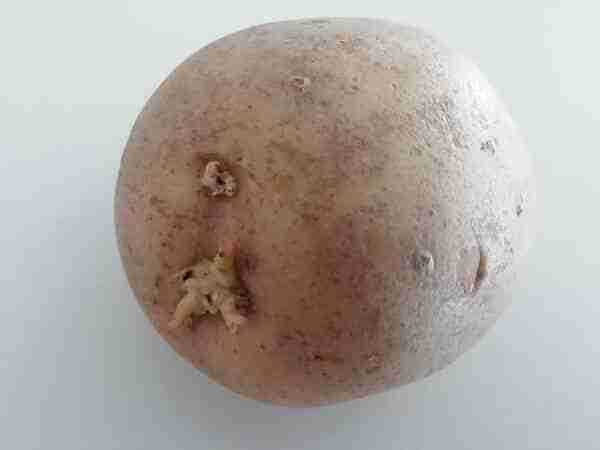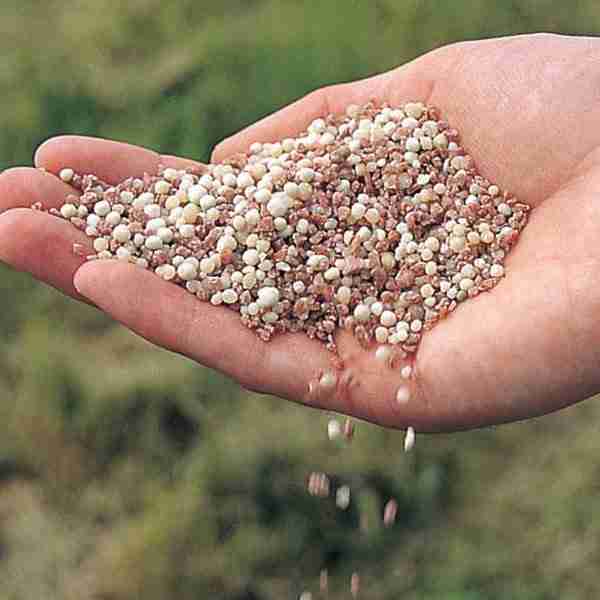If you grew or were involved with farming potatoes in the 1970s or 1980s you would most certainly have come across Grimme single-row potato harvesters. Grimme is a German company from the city of Damme in the Lower Saxony region in North West Germany. It was established in 1861, initially as a blacksmiths forge, but then began producing potato equipment in the 1930s by Mr. Franz Grimme.
Single-row potato harvesters
In the period of 1970s to 1980s single row potato harvesters were much more common than two-row harvesters, unlike today where the majority of potato growers use two-row machines. Before the invention of potato harvesters, many growers relied on using spin diggers to harvest their potatoes, which was a lot of manual work. Single-row harvesters can be either mounted onto the three-point linkage or trailed behind the tractor- attached to the tractor drawbar and travel on their own wheels.
Mounted single-row potato harvesters
A mounted (three-point linkage) harvester has the benefit of being more maneuverable and if the soil hits a wet patch it can be lifted up out of the mud – its weight being an advantage to the tractor by applying more traction to get out of the sticky patch. The downside of mounted harvesters is that they have limited web lengths – the web is made up of metal bars held together at equal spacings by canvas belts at the sides.
Short webs give less distance for the harvester to remove soil from the potatoes. Most mounted single-row potato harvesters have no mechanical soil separator either due to the limited space. An example of a mounted single-row potato harvester is the Underhaug Superfaun.
Trailed Grimme single-row potato harvesters
Trailed harvesters – like those produced by Grimme, have the advantage of having extra space to fit longer webs and mechanical soil separator systems, they also have more space to fit proper haulm removers. Generally speaking, a trailed harvester will harvest a lot more potatoes in a day compared to a mounted harvester, because it has the extra soil and haulm removal.
The downside to trailed harvesters is they are difficult to pull through wet soil conditions compared to mounted harvesters. As better, more complex mechanical separator systems are fitted, the harvester’s weight increases also. This downside was small compared to the benefits of the labour saving to the pickers on the trailed harvester. The grower just had to pick (or hope) for better weather to dig their potatoes in.
Grimme single-row potato harvester lineup
There were multiple models of single-row potato harvesters produced by Grimme during the 70s and 80s. Each model offered a slight difference in size, weight, and design – although they all looked similar in overall appearance. Some models had more complex mechanical soil separators and rear crop transfer arrangements. Potato harvesters that were exported to the UK were given different model names rather than model numbers like many which were available in the rest of Europe. A few of these models were known as the: Cadet, Gazelle, Commander, Super Commander, Mid-Ranger, Crusader, and Cavalier.
The information I shared in this article was taken from a Grimme operators manual I own for my Cadet harvester.

It contains a useful table at the start of the book which outlines the different specifications of each harvester. I have written a small paragraph for each machine of my knowledge of them.

Grimme Cadet
The Grimme Cadet was the smallest and most basic of all the Grimme single-row potato harvesters made during this period. But it was not by any means a poor harvester – it had very good haulm removal, its light weight was a bonus in wetter fields and it had hydraulic steering and mechanical soil separation in the form of a rubber spiked pintle belt commonly referred to as a hedgehog.

The Cadet was a non-bunker harvester – it was only ever produced with a bagging platform or side discharge elevator, but had lots of space to hold filled bags of potatoes. Many growers continued using this harvester long after its heyday to harvest early potatoes as they could be filled into a weighbridge fitted to the bagging unit onboard, so the tied bags were ready for sale from the harvester.
A downside the Cadet had was its capacity. The round basket conveyor at the rear of the machine which transported the potatoes from the bottom digging web to the separator at the top was made up of individual baskets. These were quite small which meant they could fill up easily.

If your forward speed was too fast or if there was too much soil reaching the baskets, they would overfill, then as they traveled around, the excess in the basket would catch on the side plates- which were fitted to stop the contents of the basket falling out onto the ground as it became inverted on its way to the top.
Grimme Gazelle
The Grimme Gazelle was slightly longer than the Cadet but it was quite a bit larger in capacity / capability. It had the option of a bagging unit and platform, a side discharge elevator or a bunker bin (which was unfolded and lifted by hydraulic rams) or it could be fitted with a side elevator to discharge into trailers.

The Gazelle had a similar rear haulm removal elevator to the Cadet which worked well, but it had a much better rear basket wheel elevator, the baskets were larger and the drive wheels were less prone to slipping. It had hydraulic drawbar steering known as lane steering and the option of hydraulic rear-wheel steering too. The tyres fitted to the Gazelle were larger than the Cadet which helped it to carry its slightly heavier weight through wet soil.

The mechanical soil separator fitted to the Gazelle worked in a different way than the one fitted to the Cadet. On the Cadet the Hedgehog belt ran from left to right although it was tilted downwards and a deflector guided the potatoes off onto the picking web below.
The Gazelle had a hedgehog belt that ran from bottom to top and was tilted downwards- this had its advantages in that it would rarely get blocked as the Cadet could, but if large amounts of soil stuck on the belt it could carry potatoes up and out the back. These potatoes were directed into the trash web which ran alongside the main picking web, this meant the potatoes would need to all be lifted out into the picking web again. This design of hedgehog was good for preventing blockages but was less effective than the separators which had the hedgehog running from left to right with oscillating fingers.

Grimme Commander and Super Commander
The Grimme Commander and Super Commander were similar to the Gazelle in size and frame, the Commander had the same type of mechanical soil separator as the gazelle but the Super Commander had a much better mechanical soil separator arrangement. It was similar to the Cadet in that it ran from left to right but the hedgehog belt was much longer and wider, it also had a much better rubber finger bar deflector for removing soil lumps and stones than the Cadet.

The other benefit the Commander models had was that it had a hydraulically controlled picking table web, which the operators could adjust independently to the harvester’s forward speed. The main digging web speed was controlled by the tractor PTO, but having a picking table operate independently was a benefit to the pickers as they could adjust the speed depending on how much picking was needed at that time.
The Commander models all had their own onboard hydraulic reservoir and PTO-powered pump which powered lane adjust, optional hydraulic rear-wheel steering, adjustable hydraulic picking web speed control, and adjustable hydraulic hedgehog speed control.
Grimme Mid-Ranger
The Mid-Ranger was a larger frame harvester than the Gazelle and Commander models. It was similar in size to the Crusader and Cavalier, but it had more basic functions than them. It did not have its own onboard oil reservoir or PTO-driven oil pump and it had the old type round basket wheel at the rear rather than the newer type “square” high-capacity crop elevator fitted to the Crusader and Cavalier

The Mid Ranger came as standard with the left to right hedgehog fitted with dual oscillation rubber fingers or rubber paddle deflectors which could be manually adjusted closer or further to the hedgehog belt. There was a metal handle positioned on the right side of the harvester which could be screwed in or out to adjust the speed of the picking web and hedgehog. This handle adjusted a variable speed belt and pulley underneath the hedgehog belt.


The Mid Ranger had one more optional extra than the Commander series and that was it could be fitted with a powered brush on top of the hedgehog to allow it to operate in very stoney conditions. This brush known as the Stone Separator Brush was much better at removing stones from the potatoes than the oscillating finger was. It too was mechanically driven from a gearbox on the hedgehog.
Grimme Crusader
The Crusader was more or less the same harvester as the Cavalier. It had the same frame size, the same intake share and digging web, the same rear square crop conveyor, the same onboard hydraulic reservoir and pump, and the same bulk bin size/capacity. But where it differed to the Cavalier was in its mechanical soil separator.
The Crusader was a purpose-built stone-eating monster. It was fitted with two hedgehog belts and two stone brushes- it had no option for fingerbar separation- only brushes.

There were fewer Crusader models to be found online to show you one in action, perhaps being such a stone-specific machine made them less popular than the Cavalier. I have included a double-page image of the differences in the separators between the Crusader and the Cavalier.

Grimme Cavalier
The Cavalier was the flagship model of this era of potato harvesters, it had every imaginable extra you could ask for: its own hydraulic reservoir and pump, hydraulic lane steering, hydraulic rear-wheel steering, adjustable hydraulic picking web speed, adjustable hydraulic hedgehog speed, high capacity “square” crop elevator and large hydraulically controlled discharge bin and elevator.

These made the Cavalier the highest capacity single row harvester Grimme had at that time, although it also made it the heaviest at 3810kg empty plus a bunker that could hold almost 1300kg of potatoes it was over 5 tonnes with no optional harvester-assisted wheel drive made it machine for dry fields only.




I couldn’t find an image of the Cavalier as a bunker model, but I’m sure it was an impressive sight. If you have any pictures of a Cavalier please get in touch so I can share them in this article.
I hope you found this article interesting- I certainly enjoyed writing it – let me know in the comments if you’d like to read more about other models of potato harvesters.


